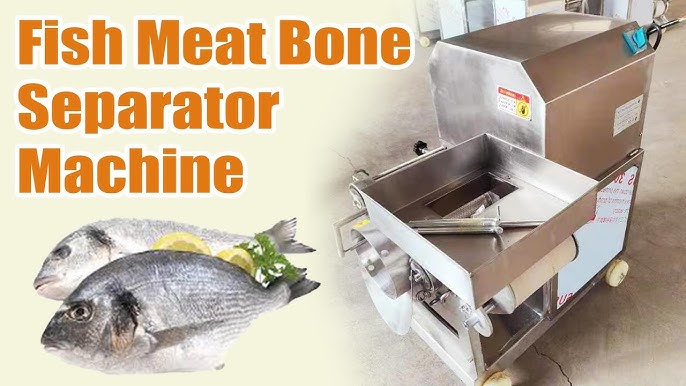10 years of experience as a food machinery equipment manufacturer
10 years of experience as a food machinery equipment manufacturer
The seafood processing industry continually seeks innovations to enhance efficiency, product quality, and safety. A significant challenge in this sector is the effective removal of fish bones, a labor-intensive and often imperfect process when done manually. The advent of fish bone separator machines has offered a mechanical solution to this problem, promising to streamline operations and improve the usability of fish meat. However, the efficacy and reliability of these machines are paramount, necessitating thorough and objective testing protocols before they are widely adopted or deemed suitable for various applications.

Fish bone separator machines, also known as deboners or meat-bone separators, are designed to isolate fish flesh from bones, skin, and sometimes scales. The fundamental principle typically involves applying mechanical pressure to force the softer fish meat through small perforations or slots in a drum or belt, while the harder bones and skin are retained and expelled separately. Different designs exist, including rotary drum systems where fish are pressed against a perforated drum by a flexible belt, and press-type systems that use a piston or screw to exert force. The goal is to achieve a high yield of bone-free fish mince suitable for further processing into products like fish cakes, surimi, sausages, or fillings. The efficiency of this separation is crucial, as is the quality of the recovered meat, which should ideally retain its texture and nutritional properties with minimal contamination.
Rigorous testing of fish bone separator machines is indispensable for several reasons. Primarily, it ensures food safety by verifying the machine’s ability to consistently remove bones to an acceptable level, minimizing the risk of consumers encountering hazardous sharp fragments. Secondly, testing quantifies the economic viability of the machine by measuring its yield – the amount of usable meat recovered versus the amount of fish processed – and its throughput capacity. A machine with poor yield or slow processing speed may not be cost-effective for commercial operations. Thirdly, testing assesses the quality of the end product; the separation process should not unduly damage the fish meat’s texture, elevate its temperature significantly (which can promote microbial growth), or introduce contaminants. Furthermore, evaluations of operational reliability and durability are critical. Machines must withstand the rigors of continuous operation in demanding, often corrosive, environments typical of seafood processing plants. Finally, aspects like ease of cleaning and sanitation are vital for maintaining hygiene standards and preventing cross-contamination.
A comprehensive testing regimen for a fish bone separator machine focuses on several key performance indicators (KPIs). These parameters provide objective data to assess the machine’s suitability for specific applications and its overall effectiveness.
Conducting meaningful tests on a fish bone separator machine requires simulating real-world operational conditions as closely as possible. This often begins with selecting a representative range of fish species that the machine is intended to process. Different species vary in size, flesh texture, and bone structure, which can significantly affect the separator’s performance. For instance, small, bony fish might pose a different challenge than larger fish with more robust skeletons. The fish may be processed in various forms – whole, headed and gutted, or filleted – depending on the machine’s design and intended application.
During the testing phase, the machine is typically run for extended periods to assess its consistency, reliability, and to check for any issues like overheating of components or material fatigue. Samples of the input material, the separated meat, and the waste (bones and skin) are collected at regular intervals. These samples are then meticulously analyzed. The input and output weights are recorded to calculate yield. The separated meat undergoes careful inspection for residual bones, texture changes, and temperature. The waste material is also examined to ensure that minimal edible flesh is being discarded. Adjustments to machine settings, such as pressure or drum speed (if applicable), may be made and tested to optimize performance for different types of fish or desired output characteristics.
The data gathered from these comprehensive tests provide an objective basis for evaluating the fish bone separator’s capabilities and limitations. For manufacturers, test results are invaluable for identifying areas for design improvement, refining operational parameters, and substantiating performance claims. For potential buyers in the seafood processing industry, such test data allows for an informed decision-making process, helping them select a machine that best fits their specific needs in terms of capacity, yield, product quality, and budget. Transparent and standardized testing methodologies contribute to raising the overall quality and reliability of fish bone separation technology available in the market.
In conclusion, the meticulous testing of a fish bone separator machine is a critical step that underpins its successful implementation in the food processing industry. It goes beyond simple functionality checks, delving into quantitative measures of efficiency, safety, and product quality. Through such rigorous evaluation, stakeholders can gain confidence in the technology’s ability to deliver consistent results, enhance productivity, and contribute to the production of safe, high-quality seafood products for consumers.
